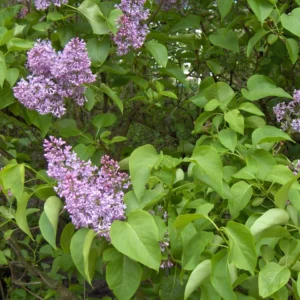Description
Tulip Tree (Liriodendron tulipifera) 1 Yr Old Seedling
Overview
The Tulip Tree (Liriodendron tulipifera) is a strikingly elegant and fast-growing deciduous tree known for its tulip-shaped flowers and vibrant yellow fall foliage. Native to North America, this tree thrives in a variety of environments and is highly valued for its beauty, shade, and ecological contributions.
Native Range
The Tulip Tree is native to the eastern United States, flourishing in rich, well-drained soils along riverbanks, valleys, and forested areas. It has adapted to a wide range of habitats, becoming a cherished species in parks, gardens, and restoration projects.

Growth and Form
- Height: Tulip Trees typically grow 70–90 feet tall, with some specimens reaching over 100 feet under optimal conditions.
- Spread: Mature trees have a symmetrical, pyramidal to oval crown with a spread of 30–50 feet.
- Growth Rate: Known for its rapid growth, the Tulip Tree can grow 2–3 feet annually when provided with ideal conditions.
- Foliage: The large, bright green leaves are uniquely lobed and turn brilliant yellow in autumn.
- Flowers: Produces tulip-shaped flowers in late spring, featuring greenish-yellow petals with orange centers.
- Bark: Smooth and gray on young trees, developing deep furrows with age for a textured, mature appearance.
This combination of rapid growth, attractive form, and seasonal interest makes the Tulip Tree a standout choice for landscapes and reforestation.
Ecological Benefits
- Wildlife Habitat: Tulip Tree flowers provide nectar for pollinators such as bees and hummingbirds. Birds and squirrels enjoy the seeds, and the dense foliage offers excellent nesting opportunities.
- Shade Provider: Its broad crown creates ample shade, making it an excellent choice for urban parks and large yards.
- Carbon Sequestration: As a fast-growing species, it plays a significant role in absorbing carbon dioxide and improving air quality.
Hardiness and Climate Tolerance of Tulip Tree
- Hardiness Zones: 4–9, making it suitable for a wide range of climates.
- Drought Tolerance: Moderately drought-tolerant once established, though it performs best with consistent moisture.
- Wind Resistance: Tulip Trees develop strong root systems, providing good stability in moderate wind conditions.
- Soil Adaptability: Thrives in well-drained, fertile soils but tolerates loamy or sandy conditions. Prefers slightly acidic to neutral pH.
Tulip Tree Planting and Care
- Planting Location: Requires full sun to thrive; plant in a location with at least 6–8 hours of sunlight daily.
- Soil Preparation: Prefers loose, fertile soil with good drainage. Amend heavy clay soils to improve drainage before planting.
- Watering: Provide regular watering during the first few years to establish a strong root system.
- Spacing: Allow 30–50 feet between trees to accommodate mature size.
- Pruning: Minimal pruning required; prune in late winter or early spring to remove dead or damaged branches.
- Fertilization: Fertilize in early spring with a balanced fertilizer to encourage healthy growth.
Potential Problems
- Pests: Occasionally affected by aphids, scale, or leaf miners, though these pests rarely cause significant damage.
- Diseases: Susceptible to verticillium wilt in poorly drained soils. Ensure proper planting conditions to minimize risk.
- Deer: Not a preferred species for deer, though browsing may occur in areas with high deer populations.
Uses of Tulip Tree
- Shade Tree: Provides excellent shade for residential and public spaces.
- Ornamental Feature: Admired for its symmetrical shape, colorful flowers, and striking fall foliage.
- Reforestation: Ideal for restoration projects in its native range.
- Timber Production: Valued for its straight, lightweight wood used in furniture and construction.
Cultural Significance of Tulip Tree
The Tulip Tree has long been revered for its beauty and practical uses. Indigenous peoples used its wood to construct canoes, and its flowers have symbolized renewal and growth in various cultural traditions.
Propagation
- Seed Propagation: Seeds require cold stratification for 60–90 days before germination. Sow in spring for best results.
- Cuttings: Hardwood cuttings can be taken in late fall or winter and rooted under controlled conditions.
Conclusion
The Tulip Tree is an exceptional choice for those seeking a fast-growing, visually stunning tree with ecological and practical benefits. Whether planted as a focal point in the landscape or as part of a reforestation project, this versatile species offers unmatched beauty and utility year-round.






Reviews
There are no reviews yet.